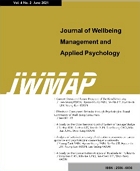- 권한신청
- E-ISSN2586-6036
- KCI
2권 1호
초록
Abstract
"In the future, 80% of doctors will be replaced by advanced technology." It has been talked about for a long time. When I first heard this story, people said it was ridiculous. But now that AlphaGo has won the Go match against Lee Se-dol, and many global companies have come up with a variety of services and products based on artificial intelligence, the story has become no more than ridiculous. In other words, it is beginning to come true. Artificial intelligence technology is already widely used in manufacturing and service industries. This spread of artificial intelligence is sure to usher in an era of great change in our future. And it is safe to say that it is the "medical world" where the biggest changes will be made. So how on earth does artificial intelligence replace medical personnel? If replaced, where would you stand out? In order to understand this, we must first be familiar with deep learning, which is the basis of medical artificial intelligence. And as the fourth industrial revolution gradually approaches reality, various occupational groups are becoming meaningless, as in the preceding industrial revolution, and in this paper we will learn about the impact of this situation on the medical community.
초록
Abstract
The uniqueness of labour as a factor of production is that labour services cannot be separated from the employee. However, since the object of sale is only the services of the employee, not an employee himself, the labour conditions, determined by the labour and collective agreements or other agreements concluded at other levels and within the current legislation, are equally important. Speaking as a subject of labour, a person can realize his or her labour potential by the way of self-employment, that means to act as an independent producer seller of their products. Another way of labour potential realization is hiring, that means offering of the services as a hired employee to the employer, who is the subject of ownership. In this case there is an exchange under the principle: qualification and working time of the worker - for wages and profits. Each enterprise is confronted with a set of goals, among them - economic and social leadership. For their achievement the company uses all the available arsenal of resources - material, land, financial, labour. This indicates the equivalence of all types of resources in achieving the goal. But this is not quite true, because every resource can be included in production only through the activity of labour and people. And this activity depends on the attitude of the company to its employees, the degree of their motivation and stimulation.
초록
Abstract
This paper presents two social and academic studies on the boundary between cultural production and consumption. The first line of the study on cultural omnivore analyzes the choice of heterogeneous audiences in the face of various cultural offerings. The second line is a study of market categories, which analyzes the responses of peer audiences to objects with different levels of category code compliance. As such, this paper developed a heterogeneous audience model to evaluate objects of different types. This allows us to consider two dimensions of cultural preference: diversity and orientation of selection. To this end, this paper proposes a new analytical frame work to map consumption behavior on these two dimensions. The results suggest that one type of target that values diversity and transformation is particularly resistant to those that span boundaries. We test this argument in the analysis of two large data sets on film and restaurant reviews. Overall, our findings can extend beyond cultural consumption. Outline variability of contextual individuals or individuals in the same situation can cross cultural boundaries even if they are not intentionally pursuing such hybridism.














